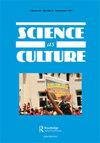作为一项前沿技术的受害者官方记录:冲突后哥伦比亚的知识和可见性
IF 2.5
3区 哲学
Q1 CULTURAL STUDIES
引用次数: 1
摘要
摘要根据2012年《受害者法》的规定,哥伦比亚政府代表参与了对因战争暴力而侵犯人权的受害者进行登记和赔偿的工作。这些登记程序主要处理在国家领土内流动的人的申请,并合并在受害者官方记录中。RUV作为冲突后赔偿和国家官僚机构技术成功的典范项目,在国际上享有知名度。然而,这一成功依赖于在处理数百万申请人的陈述时被忽视的题词和评估的材料实践。尽管RUV将权利归还的边界定为一个国家项目,但关于其铭文实践、评估程序和数据制作准则的民族志摘录使广泛宣传的冲突后赔偿的成功变得复杂。与其他边界技术一样,RUV通过制定明显的身份识别形式来划定包容和排斥的边界,国内流离失所是其中的主要部分。在这一过程中,表格和评估做法优先考虑申请人与武装冲突官方版本一致的叙述,同时也提出了无形的不同说法。本文章由计算机程序翻译,如有差异,请以英文原文为准。
The official record of victims as a bordering technology: knowledge and (in)visibilities in post-conflict Colombia
ABSTRACT Following the regulations dictated by the Law of Victims in 2012, representatives of the Colombian government have engaged in the task of registering and compensating victims of human rights perpetrations as a result of war violence. These registration procedures, mostly processing the applications of people on the move inside the national territory, are consolidated in the Official Record of Victims (RUV). The RUV enjoys international visibility as an exemplar project of post-conflict reparation and technological success of state bureaucracy. This success, however, relies upon overlooked material practices of inscription and assessment involved in processing the statements of millions of applicants. Whereas the RUV enacts boundaries of rights restitution as a state project, ethnographic excerpts about its inscription practices, assessment procedures, and data production rubrics complicate the broadly promoted success of post-conflict reparation. As other bordering technologies, the RUV demarcates boundaries of inclusion and exclusion by enacting visible forms of identification of which Internal Displacement is a predominant part. In this process, the forms and assessment practices prioritize applicants’ narrations that are consistent with the official version of the armed conflict while also making invisible divergent accounts that contest it.
求助全文
通过发布文献求助,成功后即可免费获取论文全文。
去求助
来源期刊

Science As Culture
Multiple-
CiteScore
5.20
自引率
3.80%
发文量
28
期刊介绍:
Our culture is a scientific one, defining what is natural and what is rational. Its values can be seen in what are sought out as facts and made as artefacts, what are designed as processes and products, and what are forged as weapons and filmed as wonders. In our daily experience, power is exercised through expertise, e.g. in science, technology and medicine. Science as Culture explores how all these shape the values which contend for influence over the wider society. Science mediates our cultural experience. It increasingly defines what it is to be a person, through genetics, medicine and information technology. Its values get embodied and naturalized in concepts, techniques, research priorities, gadgets and advertising. Many films, artworks and novels express popular concerns about these developments. In a society where icons of progress are drawn from science, technology and medicine, they are either celebrated or demonised. Often their progress is feared as ’unnatural’, while their critics are labelled ’irrational’. Public concerns are rebuffed by ostensibly value-neutral experts and positivist polemics. Yet the culture of science is open to study like any other culture. Cultural studies analyses the role of expertise throughout society. Many journals address the history, philosophy and social studies of science, its popularisation, and the public understanding of society.
 求助内容:
求助内容: 应助结果提醒方式:
应助结果提醒方式:


